
Anyone who gardens in even the slightest rural area can attest that there is no such thing as a deer-proof garden. These four-legged-munching-machines will graze, uninvited wherever you grow veggies, flowers or fruit.
Oh, you mean you didn’t plant these apple trees for us? What do you mean your flower bed isn’t a salad bar? Pfft, rude.
Keeping deer in check can be a real struggle.
Fencing in your veggie garden is an easy way to keep them out, but what about flower gardens? Fenced-in flower beds kind of kills the point of the natural beauty they’re meant to display. Instead, you can make your flower beds less appealing by planting a few of these deer-resistant bulbs this fall.
The Nature of Deer
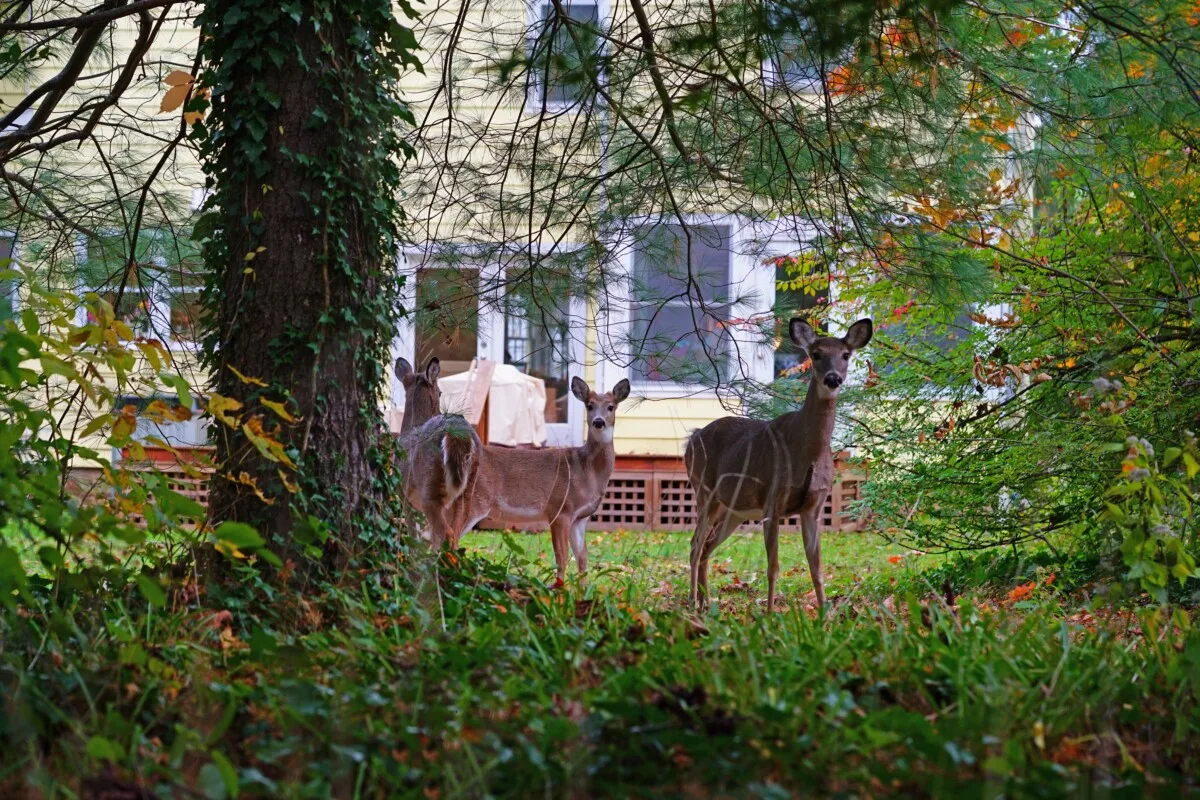
My sweetie lives on a plot of land surrounded by state game lands. We have an impressive rotation of critters that pass through the yard. And let me tell you, there’s nothing quite like getting up early in the morning, hot cup of coffee in hand, and watching a doe and her spotted fawns step gingerly from the forest covering to come and drink from the fog-covered pond.
Well, until they start eating all my flowers.
Then, the magic of the moment kind of wears off, and the swearing and banging on the window begins.
Deer are natural-born grazers. It helps if you think of them as the cows of the forest. (Not so majestic now, are you, Bambi!) Maybe a more appropriate comparison is with goats because, like goats, deer will eat most anything in their path. Is it green? Is it vegetation? Chomp-chomp-chomp.
Sure, they have their favorites, and there are many plants that they will avoid. But if a lean winter or drought has made for slim pickings, deer will eat what’s available. So, no garden will ever truly be deer-proof.
The Magic of Plant Compounds
However, if you want a deer-resistant garden, get out your lab coat and those super-sexy lab goggles because we’re going to Chemistry class.
The flowers listed here are deer-resistant thanks to the toxic plant compounds found in each. These substances make the flowers inedible or toxic to deer, who are (usually) smart enough to skip over them in favor of something that won’t give them an upset stomach.
Many of the plants on this list contain two well-known compounds that keep deer away.
Lycorine
A crystalline alkaloid that is poisonous to deer and other mammals. (That includes us, so no eating your daffodils.)
Calcium oxalate crystals
Nibbling on plants with oxalate crystals can cause deer extreme pain and swelling to the mouth and gastric distress.
You know that feeling you get on your teeth when you eat raw spinach? Yeah, that’s oxalate crystals. Only those are block-shaped, so they just make your mouth feel funky.
The calcium oxalate crystals in flowers of the Amaryllidaceae family are raphides, which is the super fancy scientific name for needle-shaped clusters of oxalate crystals. And eating those can do some serious damage, as one family found out when they mistook their spring daffodils for onions.
To enjoy gorgeous blooms without worrying about the Cow of the Forest nibbling on them, opt for bulbs that deer know well enough to steer clear of unless they want a bellyache.
Fall Planting
Plant bulbs in the fall well before the first freeze. Place bulbs in the ground, pointy tip up and the roots down. To give them a little added boost, you might want to sprinkle a little bone meal over them before you bury them. In the spring, you can add a light layer of compost over them. Allow the leaves to die back naturally before cutting them close to the ground.
1. Allium – Allium spp.
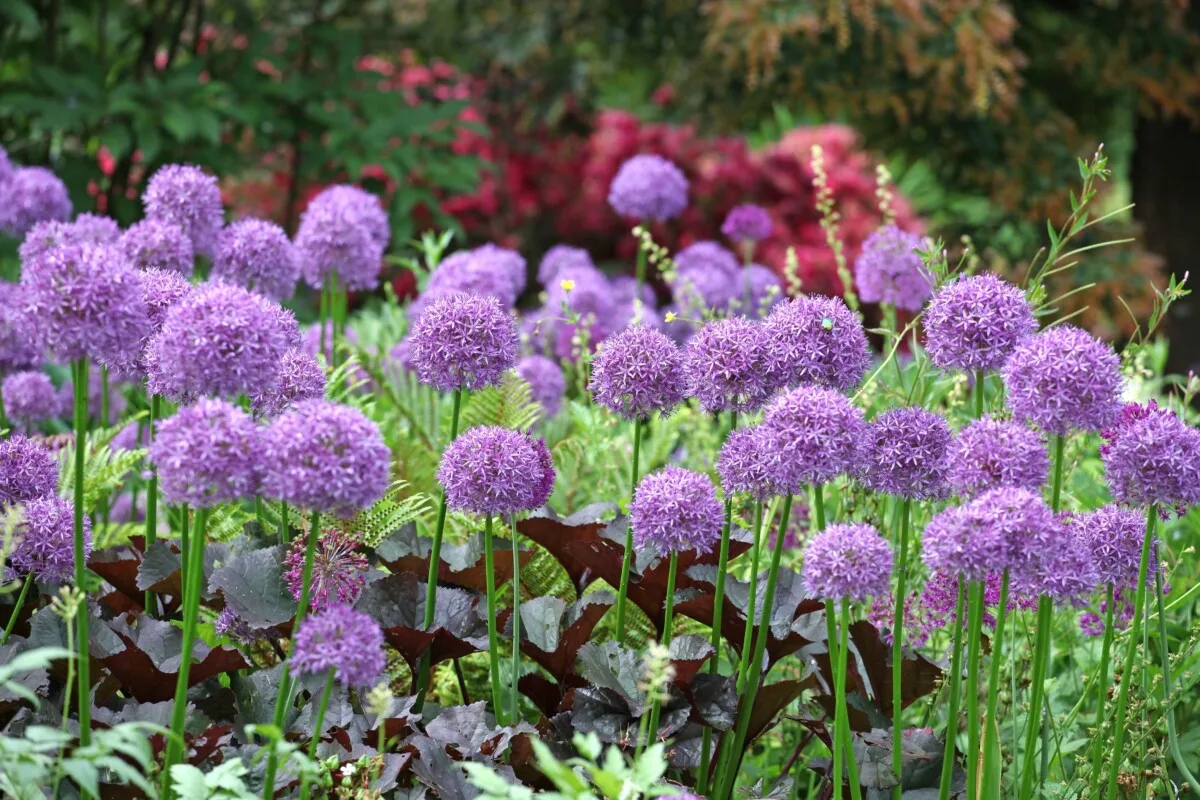
Onions? You bet. Well, the ornamental varieties anyway. Most come in shades of blue, white or purple. These early summer showstoppers add a pop of vivid color and fun with their spherical flowering heads. Deer won’t nibble these pungent plants, making them a great bulb to add to your flower beds for a tall, show-stopping focal point. If you have squirrel problems, these are a great choice as well.
- Hardiness Zone: Varies by species but generally Zones 3-9.
- Sun Requirements: Full sun to part shade.
- Soil Requirements: Well-drained soil with good organic matter.
- Water Requirements: Average moisture; avoid waterlogged soil.
- Planting Instructions: Plant bulbs 2-3 times their height deep, spaced about 4-6 inches apart.
2. Daffodils – Narcissus spp.
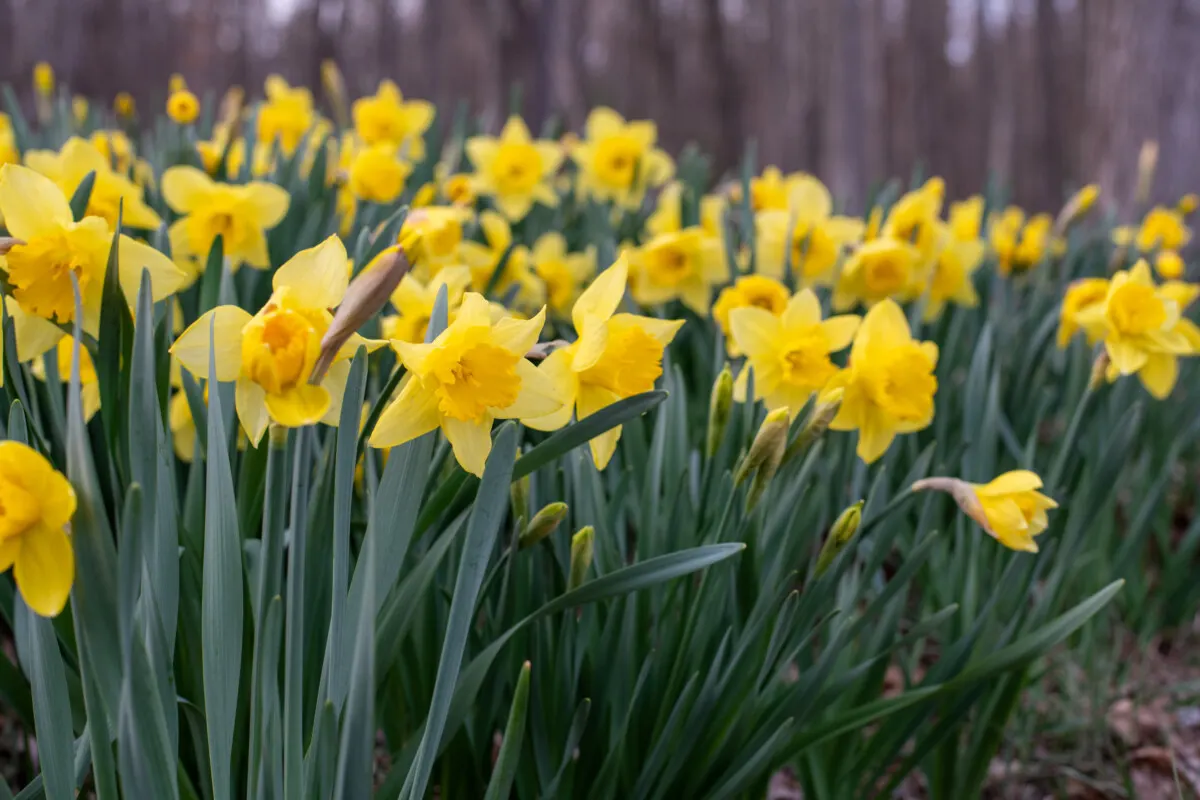
By far the most deer-resistant flower, daffodils belong in every garden. These set-it-and-forget-it spring flowers are a great choice for those looking for a flower that will naturalize with little to no extra care. If you grow non-hybrid daffodils, you can even grow daffodils from seed.
Daffodils bloom early in the spring, delighting the senses in a landscape of drab gray. Plant bulbs this fall to enjoy pops of yellow, white, cream and apricot next spring that the deer will leave well enough alone.
- Hardiness Zone: Typically, Zones 3-9.
- Sun Requirements: Full sun to partial shade.
- Soil Requirements: Well-drained soil; they tolerate various soil types.
- Water Requirements: Keep the soil evenly moist, especially during the growth phase. In spring, this is usually a non-issue.
- Planting Instructions: Plant bulbs at a depth of 2-3 times their height, with 4-6 inches of spacing.
3. Fritillaria – Fritillaria spp.
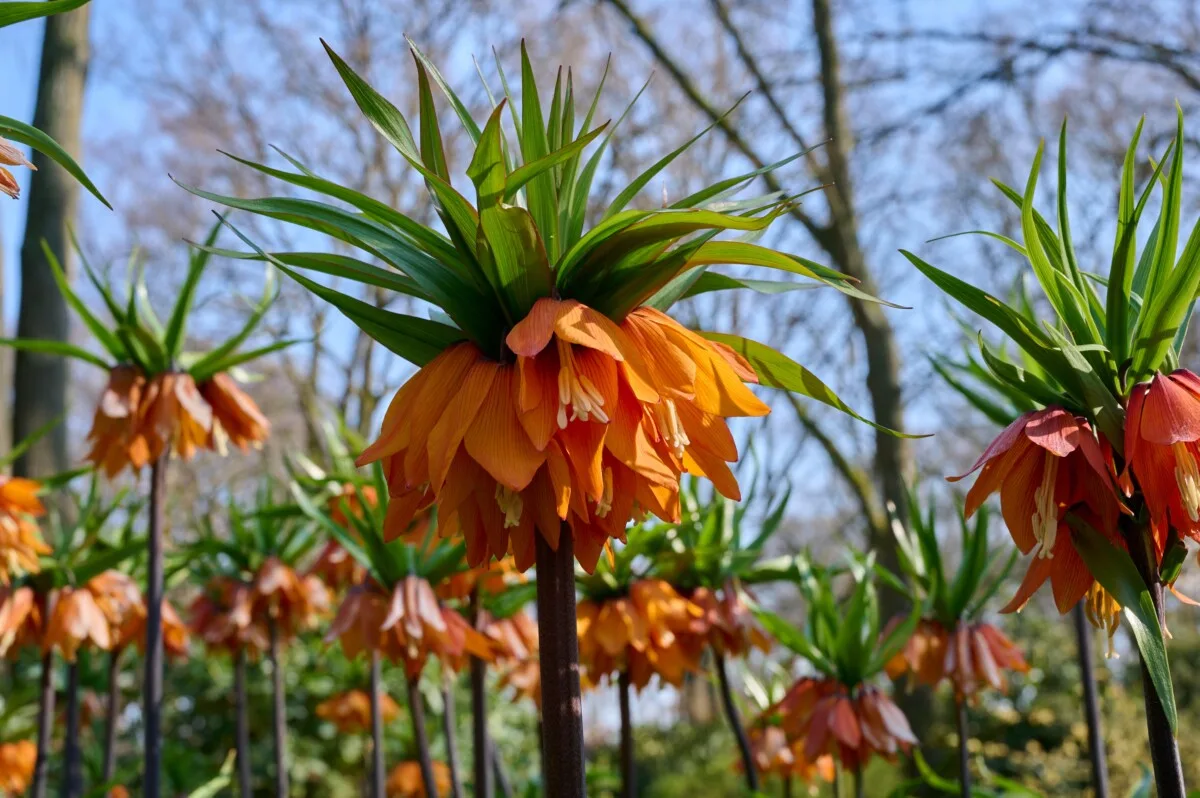
Fritillaries are also known as guinea hen flowers or Crown Imperial, and these spring-blooming flowers are just fun. They have beautiful bell-shaped flowers atop long stalks, and some varieties have a little top-knot of greenery capping off the flowers. Fritillaria have feathery, green foliage at the bottom of the plant.
The bulbs don’t do well out of the soil, so be sure to order them as soon as they’re available and get them in the ground in the fall right away. The Crown Imperial is known for putting out blind bulbs, so expect that among any batch, you will have a few that put out lots of lovely foliage but no flowers.
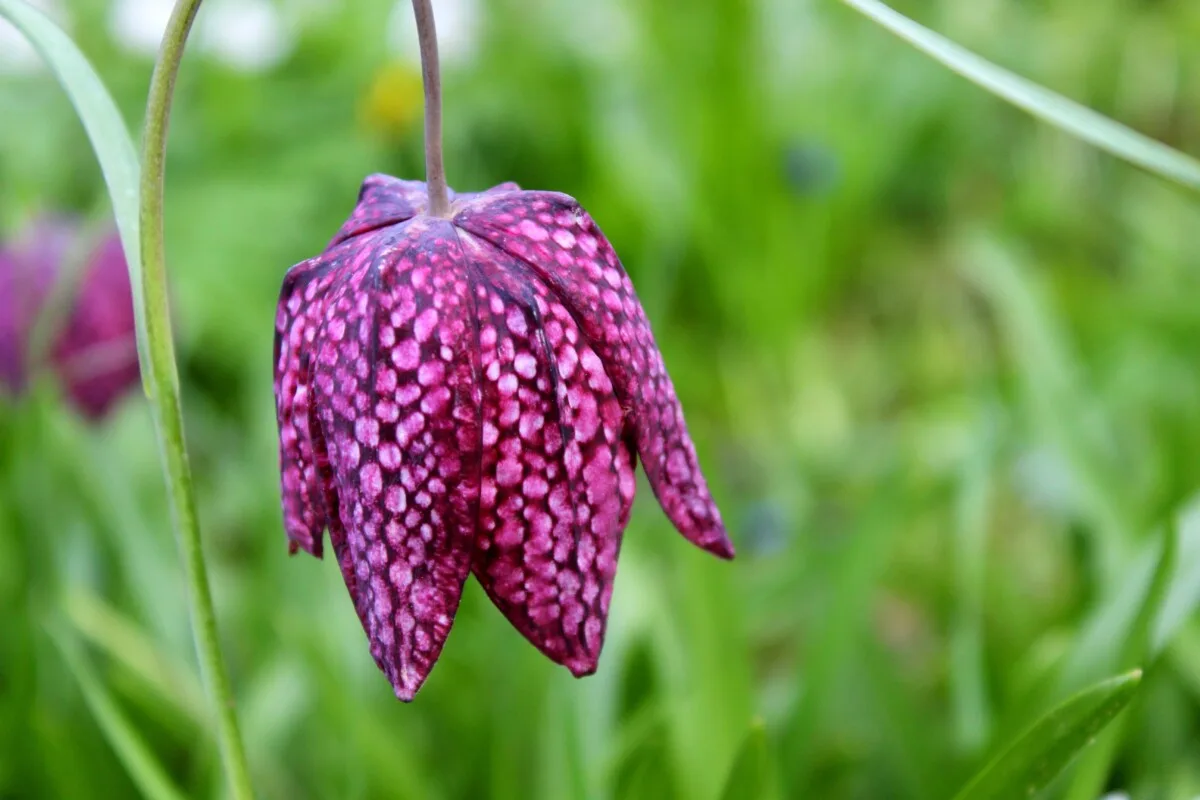
- Hardiness Zone: Varies by species; typically Zones 4-9.
- Sun Requirements: Full sun to part shade.
- Soil Requirements: Well-draining soil with moderate moisture.
- Water Requirements: Keep the soil consistently moist but not soggy.
- Planting Instructions: Plant bulbs at a depth of 3-4 times their height, with adequate spacing.
4. Glory-of-the-Snow – Chionodoxa spp.
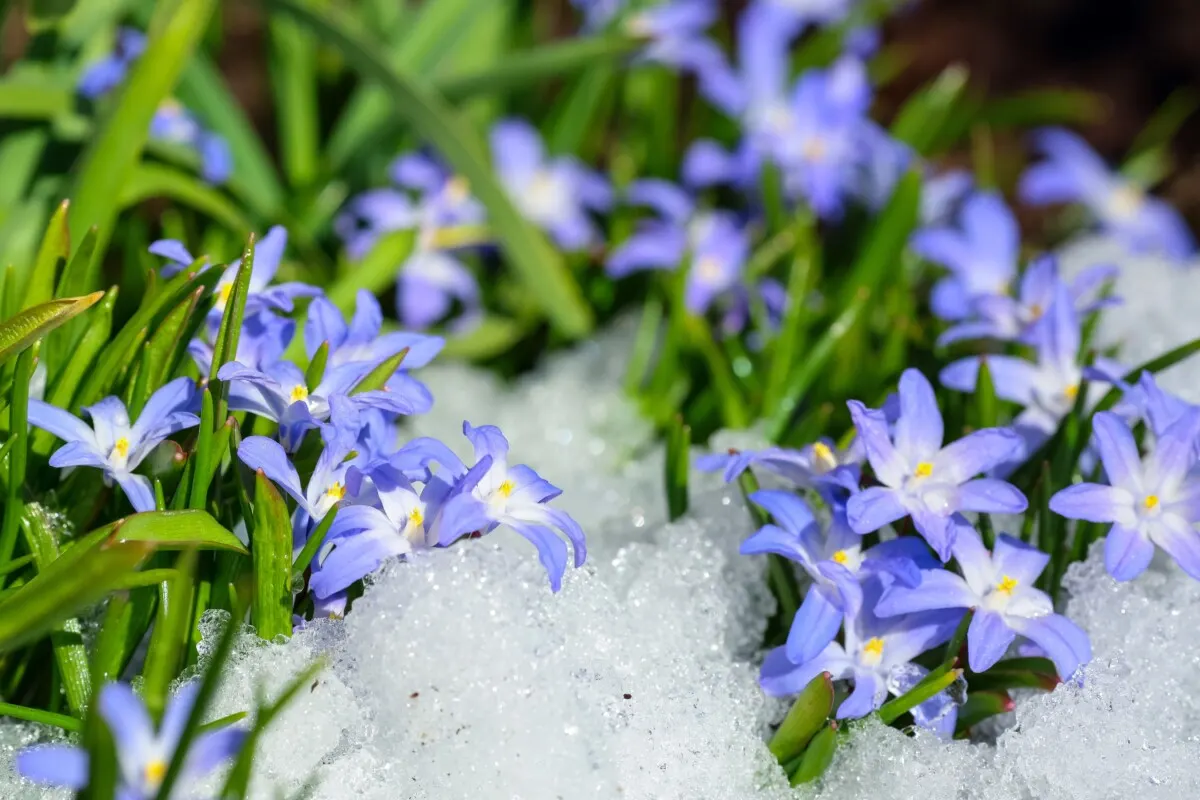
Imagine a late winter snow. You know spring is right around the corner, no matter what that wretched old groundhog says. Among the blanket of white are pops of palest blue flowers – Glory-of-the-Snow. These are some of the earliest flowers to bloom each spring, often showing up while snow is still on the ground.
If you want a carpet of color in the spring, this is your go-to bulb. You can easily plant hundreds to cover a large area without worry that deer will dig them up or nibble them in the spring. The plants naturalize and will spread into the surrounding area, making for a sea of sky-blue flowers to look forward to each spring.
- Hardiness Zone: Zones 3-9.
- Sun Requirements: Full sun to partial shade.
- Soil Requirements: Well-drained, humus-rich soil.
- Water Requirements: Keep the soil evenly moist.
- Planting Instructions: Plant bulbs at a depth of 2-3 times their height, spaced 3-4 inches apart.
5. Hyacinth – Hyacinthus orientalis
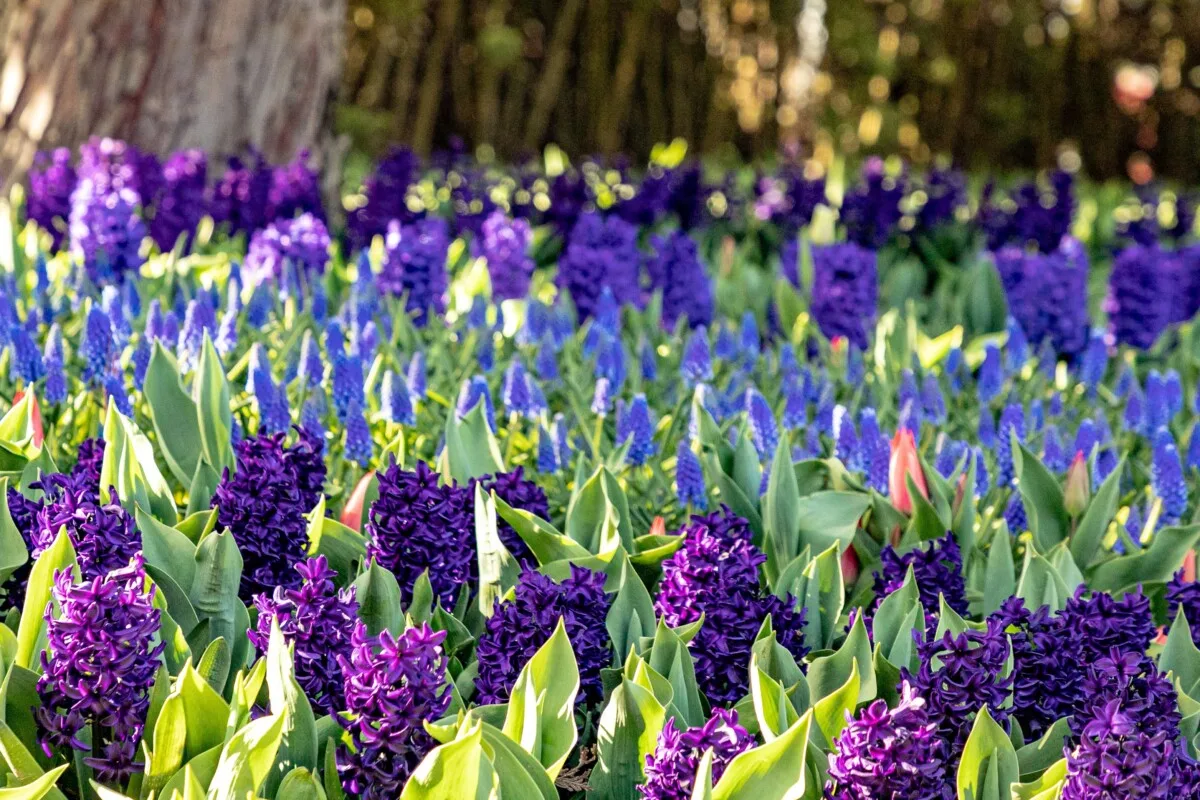
These fragrant stalked flowers come in all the colors of spring – pale pinks, buttery yellows, snowy white, and even electric purple. The stalks are tightly packed with star-shaped blossoms. For many, hyacinths are synonymous with Easter. Blooming later in the spring than daffodils or crocus, they make a good addition to your spring flower garden, offering transitioning color from mid to late spring. Or choose the small grape-like clusters of grape hyacinth; each variety is considered deer-resistant.
- Hardiness Zone: Zones 4-8.
- Sun Requirements: Full sun to partial shade.
- Soil Requirements: Well-drained, fertile soil.
- Water Requirements: Keep the soil consistently moist but not waterlogged.
- Planting Instructions: Plant bulbs at a depth of 3 times their height, spaced 4-6 inches apart.
6. Snowdrops – Galanthus nivalis
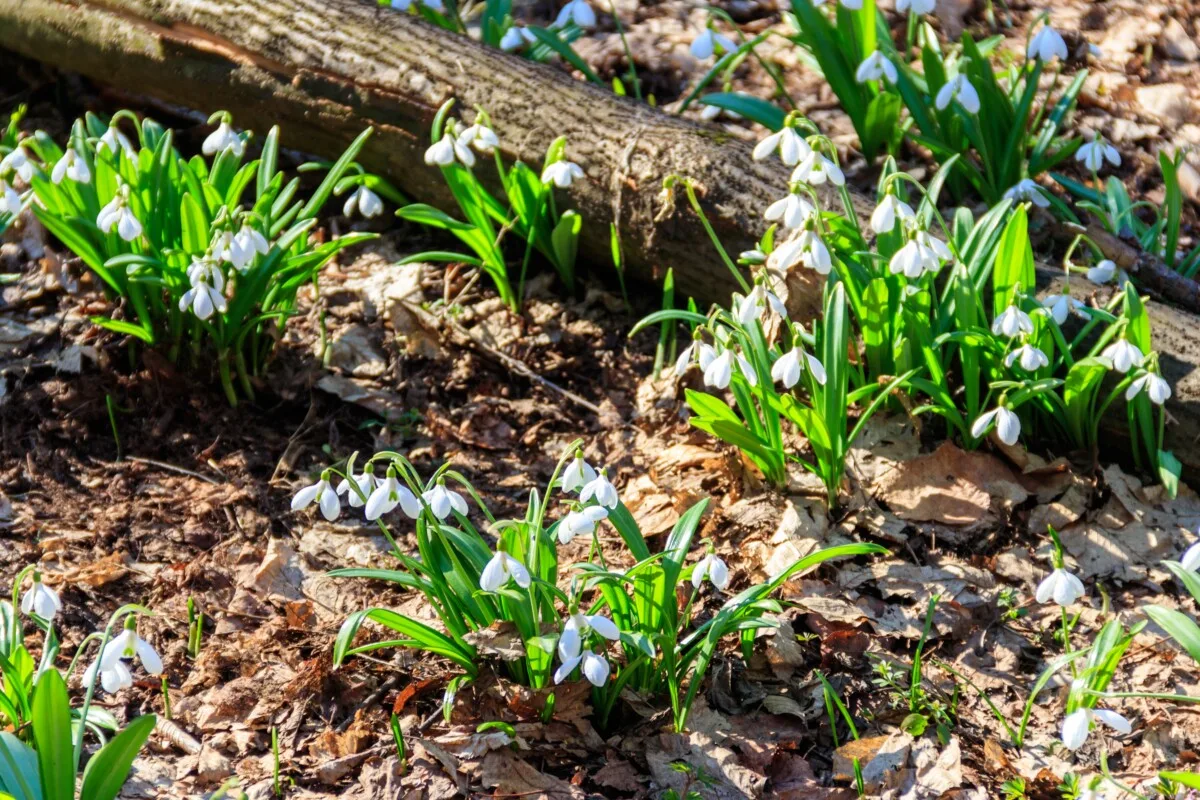
Besides being deer-resistant, snowdrops are an excellent flower to add to the pollinator-friendly landscape. These gorgeous white flowers offer nectar and pollen to bees that emerge in late winter or early spring when other food sources might still be scarce.
Snowdrops are another good choice if you want a bloom that will naturalize and spread throughout your landscape. The clean, white flowers pop amid the drab grays and browns that litter the ground in late winter, offering the first sign of spring in your backyard.
- Hardiness Zone: Zones 3-7.
- Sun Requirements: Partial to full shade.
- Soil Requirements: Well-draining soil with good organic matter.
- Water Requirements: Keep the soil consistently moist during the growing season.
- Planting Instructions: Plant bulbs at a shallow depth, about 2-3 inches, spaced 2-3 inches apart.
7. Iris – Iris spp.
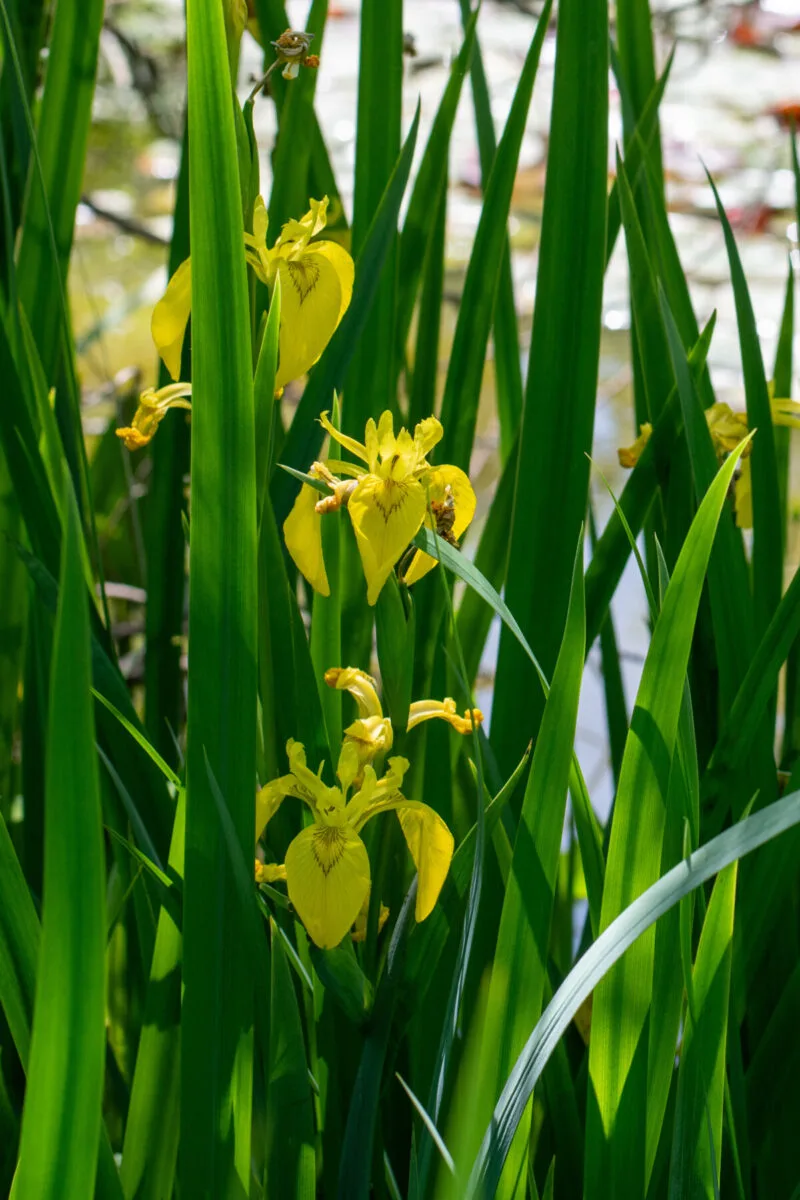
While the iris isn’t a bulb, the rhizomes do best when planted in early fall to establish before cold weather sets in. Iris, or “flags” as they’re colloquially known, are a great choice for deer-resistant blooms as they come in many colors and heights and will bloom in late spring to early summer. Along with elegant flowers, their green foliage adds to any garden you plant them in.
We grow water iris around my sweetie’s pond, and while the deer love to come and get a drink, they never nibble on the iris, leaving us with a gorgeous display of bright yellow blooms to enjoy.
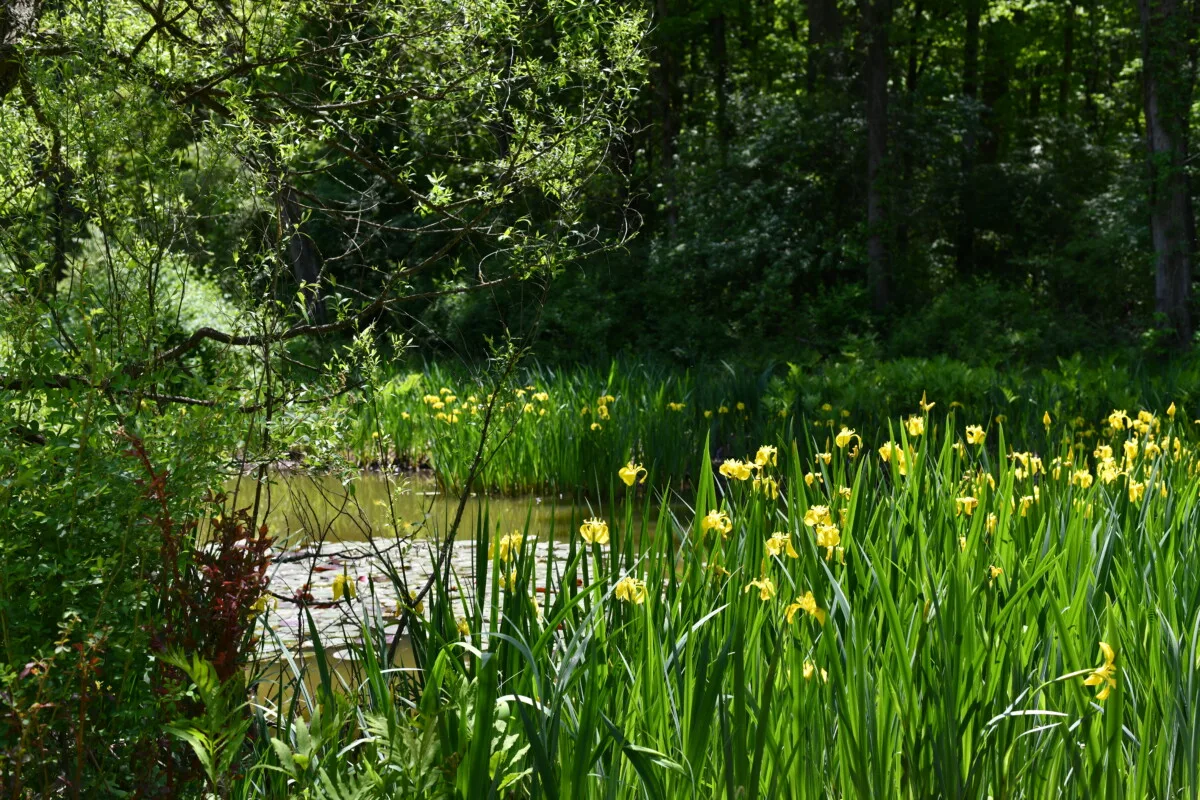
- Hardiness Zone: Varies by species, but generally Zones 3-9.
- Sun Requirements: Full sun to part shade, with at least 6 hours of sunlight per day for best blooms.
- Soil Requirements: Well-drained soil is crucial. Irises prefer slightly acidic to neutral soil.
- Water Requirements: Keep the soil evenly moist, especially during the growing season and when they bloom.
- Planting Instructions: Plant iris rhizomes just below the soil surface, leaving the tops exposed. Space them 12-24 inches apart.
8. Crocus – Crocus spp.
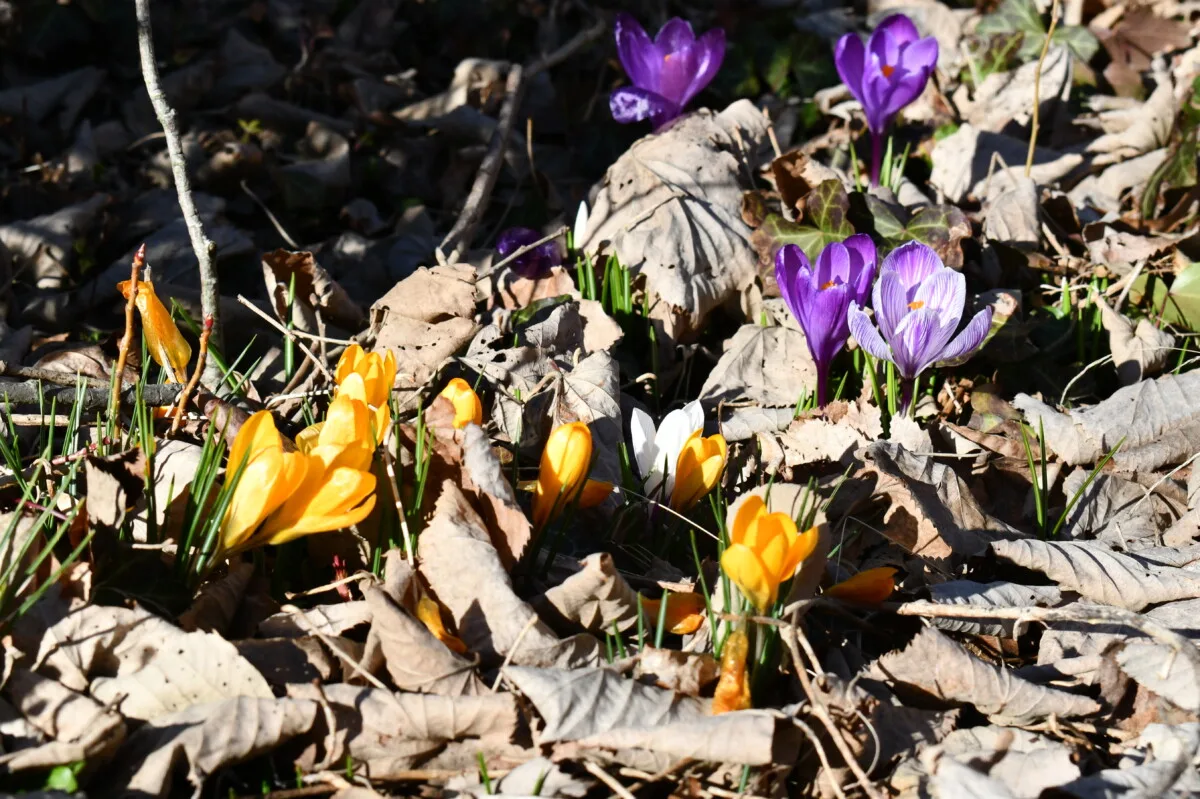
Crocus are another early-blooming spring flower, with petals that shine like they’re made of satin. From soft lavender to shocking yellow and purple, these tiny flowers announce that spring is here and they are not on the menu.
For the foodie in your house, consider growing saffron crocus. Saffron is nothing more than the dried stigmas and styles of the Saffron Crocus, but they’re incredibly spendy. Imagine having a field of deer-resistant saffron right in your backyard.
- Hardiness Zone: Zones 3-8.
- Sun Requirements: Full sun to partial shade.
- Soil Requirements: Well-drained soil; crocuses can tolerate various soil types.
- Water Requirements: Keep the soil evenly moist during their growth and flowering period.
- Planting Instructions: Plant crocus bulbs at a depth of 3-4 inches, with spacing of 2-4 inches apart.
9. Camassia – Camassia spp.
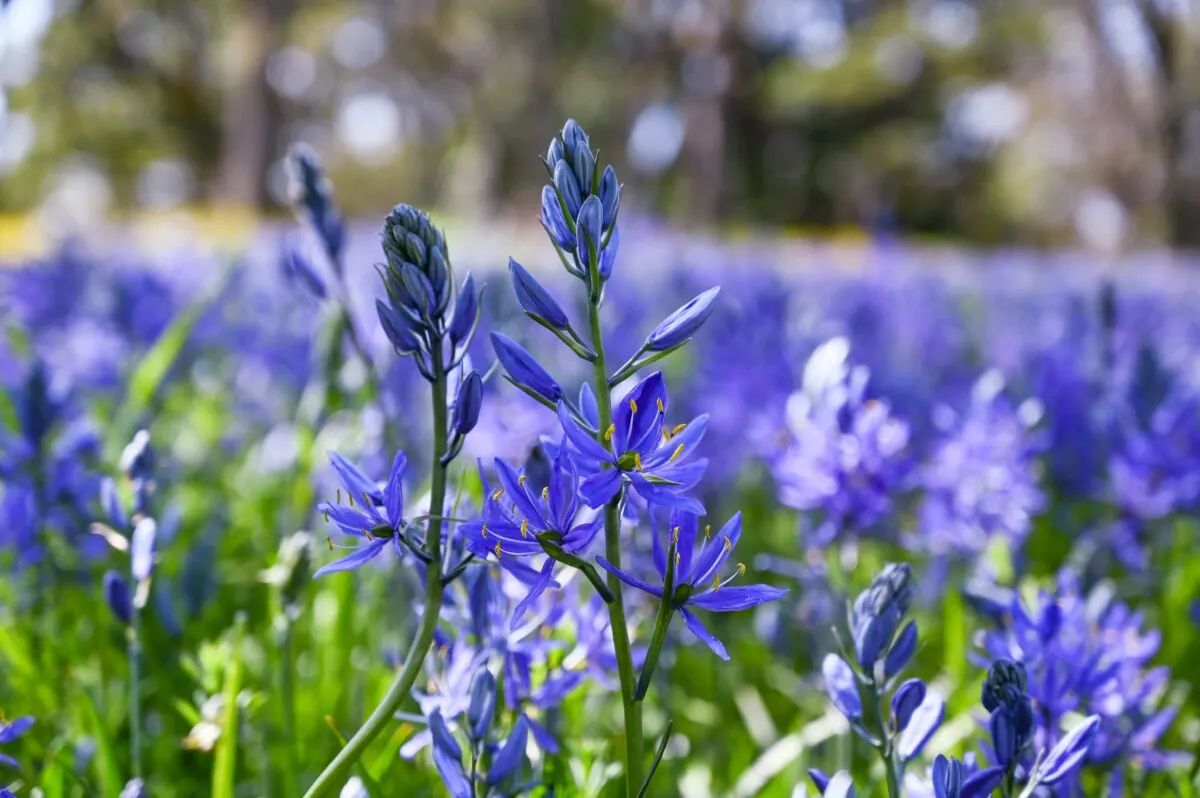
This North American native plant is a great option for those looking for native species to add to their collection. You will find them growing in the wild in moist meadows and hillsides. So, if you need a bloom for that area of your lawn that always stays damp, Camas is the perfect choice. The stalks grow to about two to three feet tall, making them an excellent statement flower in garden beds that need a little height for interest or grow them as a border plant.
- Hardiness Zone: Zones 4-8.
- Sun Requirements: Full sun to part shade.
- Soil Requirements: Well-drained soil with good moisture retention.
- Water Requirements: Keep the soil consistently moist, especially during the growing season.
- Planting Instructions: Plant bulbs at a depth of 4-6 inches, spaced about 6-8 inches apart.
10. English Bluebells – Hyacinthoides non-scripta
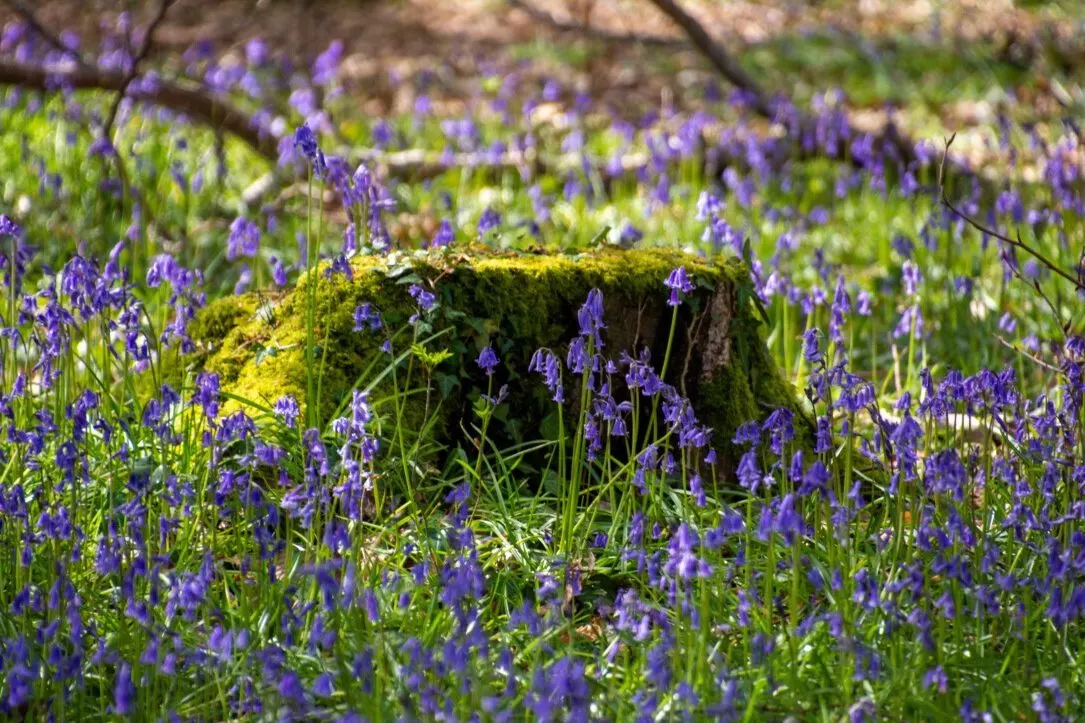
There’s something fresh and intoxicating walking through a copse of trees with a carpet of bluebells beneath your feet. Their undeniably green floral scent is something right out of a fairytale. This is one fairytale where you can enjoy the presence of deer without watching them munch on your scenery.
Plant this flower garden classic along the edges of wooded areas for a beautiful display in the spring that will creep into the forest as well as your lawn. Or grow them for cut flowers in a flower bed among other spring blooms. In either case, you won’t have to share them with the deer.
- Hardiness Zone: Zones 3-8.
- Sun Requirements: Part to full shade.
- Soil Requirements: Moist, well-drained soil with organic matter.
- Water Requirements: Keep the soil evenly moist.
- Planting Instructions: Plant bulbs at a depth of 2-3 inches, spaced about 4-6 inches apart.
11. Lily of the Valley – Convallaria majalis
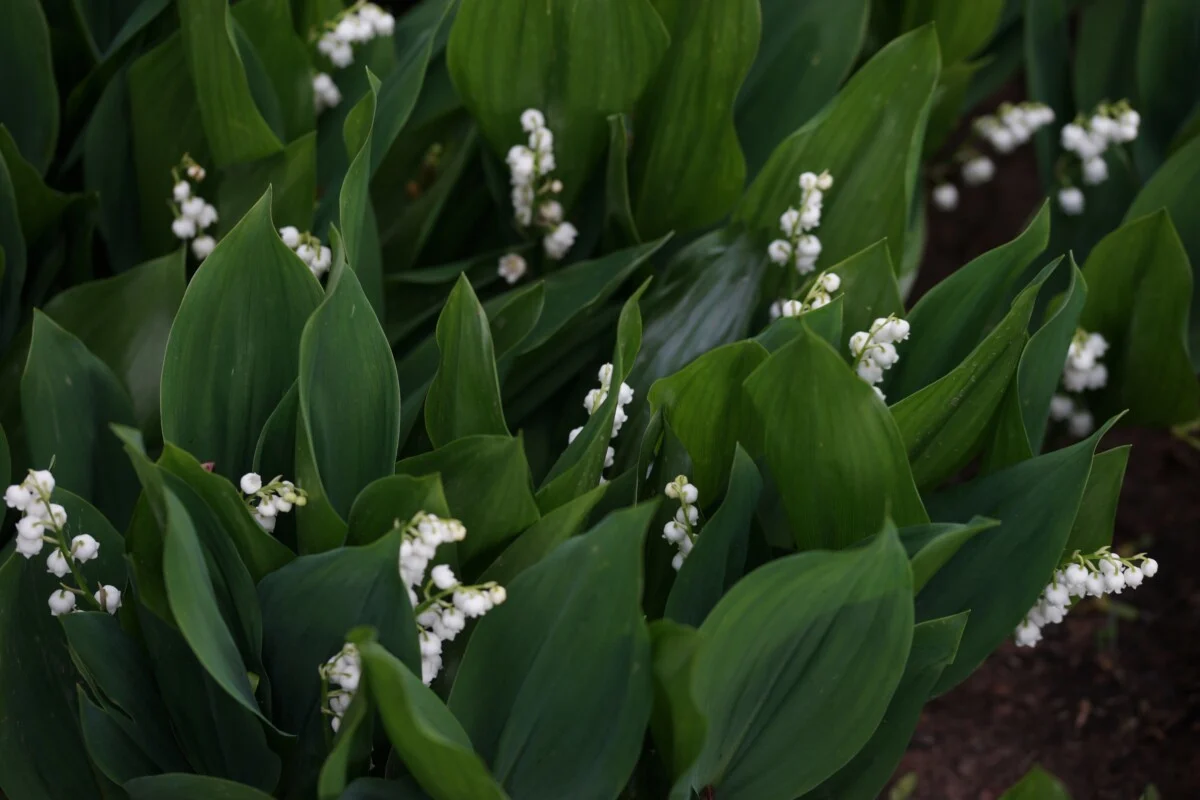
Okay, okay, you got me; Lily of the Valley isn’t a bulb. But they’re great as far as deer-resistant flowers go, and the pips can be planted in the fall around the same time you would plant bulbs, so I had to include them.
These fairy-like plants produce stalks of tiny, creamy, white bells among dark green leaves each spring. And you can’t beat the way they smell after a fresh spring rain. If you’ve got a damp and shady area of your lawn where not much will grow, plant Lily of the Valley. It will flourish!
- Hardiness Zone: Zones 2-9.
- Sun Requirements: Part to full shade.
- Soil Requirements: Moist, well-drained, rich, and organic soil.
- Water Requirements: Keep the soil consistently moist.
- Planting Instructions: Plant pips or divisions at a depth of 1-2 inches, spaced 4-6 inches apart.
Along with planting deer-resistant flowering bulbs, you can do some easy things to keep Bambi from treating your gardens like an all-you-can-eat buffet.
And if you grow fruit of any sort, you’ll want to learn how to set up a deer-proof orchard.

Get the famous Rural Sprout newsletter delivered to your inbox.
Including Sunday ramblings from our editor, Tracey, as well as “What’s Up Wednesday” our roundup of what’s in season and new article updates and alerts.

